Maintaining a clean and well-balanced swimming pool is essential for a safe and enjoyable swimming experience.
Regular pool maintenance includes various tasks, such as filtration, chemical treatments, and shock treatments.
However, there’s often confusion surrounding whether it’s possible to shock a pool without the pump running.
Some pool owners believe that turning off the pump during the shocking process is acceptable, while others argue against it.
You shock your pool by adding high-potency granular chlorine to the water and making sure that it is circulated evenly before it’s filtered to remove all bacteria.
Ideally, a pool needs a pump to shock, but in the event, you can’t use a pool brush and an automatic robot cleaner to circulate and filter the water.
When you shock your pool without running the pump, you may cause the water to appear cloudy and damage your plaster and equipment.
It is important that you wait 24 hours after shocking your swimming pool before you use it again in order to avoid experiencing any skin irritation or eye irritation.
How Does Pool Shocking Work?
Shocking a pool refers to oxidizing chloramines and unwanted pathogens by using fresh chlorine. A shock treatment is a very high-level spray of free chlorine used to eliminate all combined chlorine elements.
It is undesirable for swimmers or animals to release combined chlorine since it is free chlorine, saturated with nitrogen and ammonia from the oils and bacteria they shed. Basically, pool shock serves three purposes:
- Besides removing residual bacteria, it also disinfects the pool.
- The fresh free chlorine replaces it.
- As a result, unwanted chlorine is released.
Two crucial reasons for running your pool filter and pump when shock shocks your pool.
To achieve maximum effectiveness, circulate the water and evenly spread the granular powder. As a second step, it is important to filter out the debris, muck, and bacteria left behind by the shock.
In the absence of the pump, the shock’s potency is significantly reduced. This pump functions principally by dissolving the sanitizing agent uniformly and then straining the dirt that surfaces as a result.
Having a pump in a pool is crucial for circulation and filtration, thus defeating the purpose of shocking.
How To Shock A Pool Without The Pump Running?
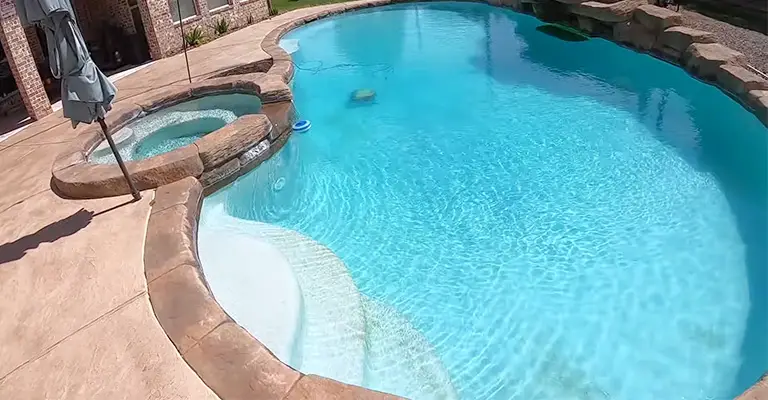
When your pool pump doesn’t work, but you desperately need to shock your pool, you can do so without a pool pump.
You should make sure the shock is spread evenly, dissolves, and is cleaned out thoroughly as much as possible. Here are the steps to shock a pool without running the pump:
Things You Will Need:
- Pool brush
- Automatic cleaner
- Chlorine diffuser
- Chlorine and pH tester
- Algaecide
- Skimmer net
- Bucket
- Pool flocculant
- Shock
Step 1: Measure Out The Shock Needed
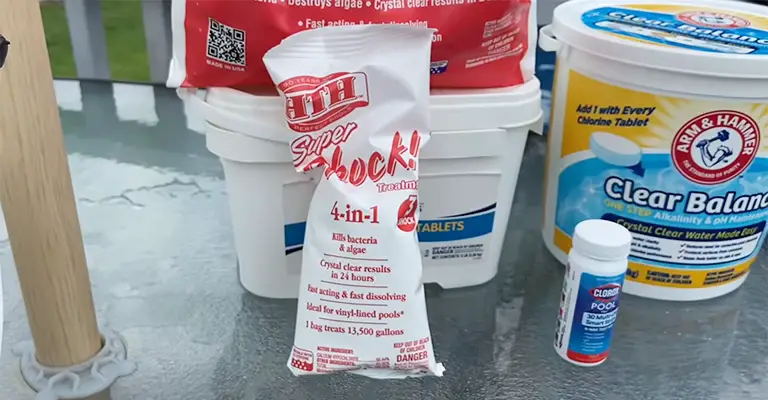
Identify the amount of pool shock needed based on the amount of water in the pool and measure it accordingly. You can use my pool volume calculator to figure out the amount of water in your pool.
Step 2: Slowly Pour The Shock
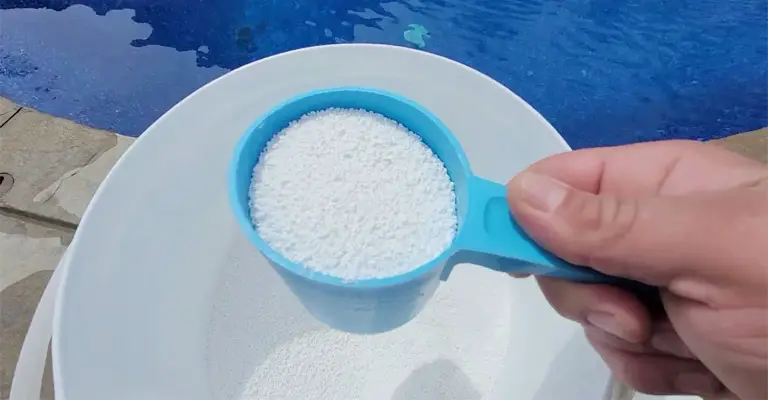
Put your shock into the pool by slowly walking around its perimeter. It is best to stagger your pour so that all perimeters receive a similar amount of shock.
Step 3: Add Pool Flocculant
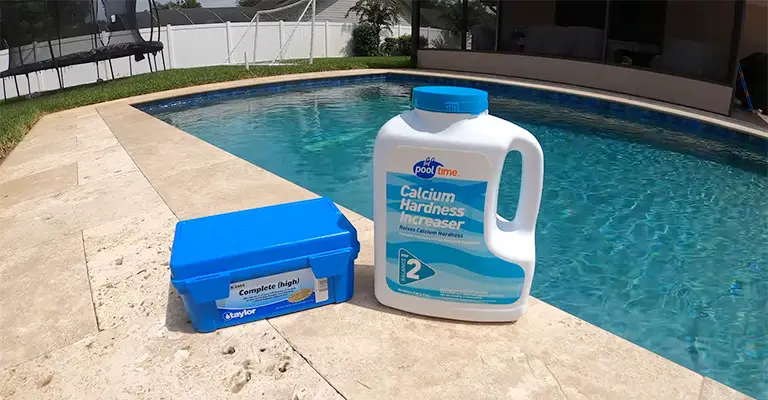
Adding a flocculant to your pool is an effective way to force finer dirt and particles to clump together and fall to the bottom, which you can then remove by vacuuming.
Step 4: Use Algaecide
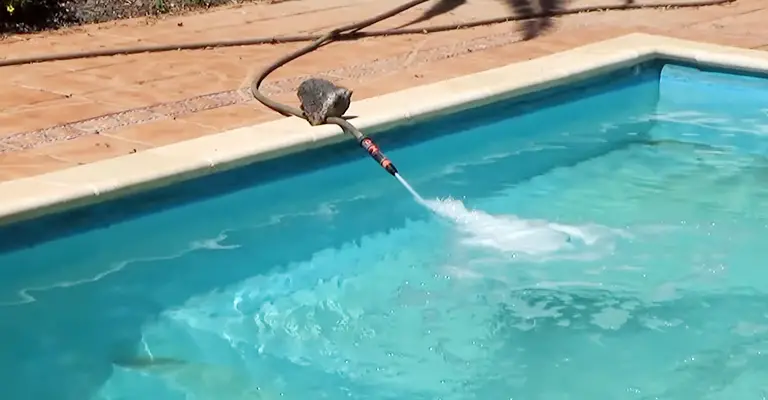
Using algaecide can help you reduce the amount of algae spores and bacteria that are attracted to your pool without a pump.
Step 5: Manually Mix The Chemicals
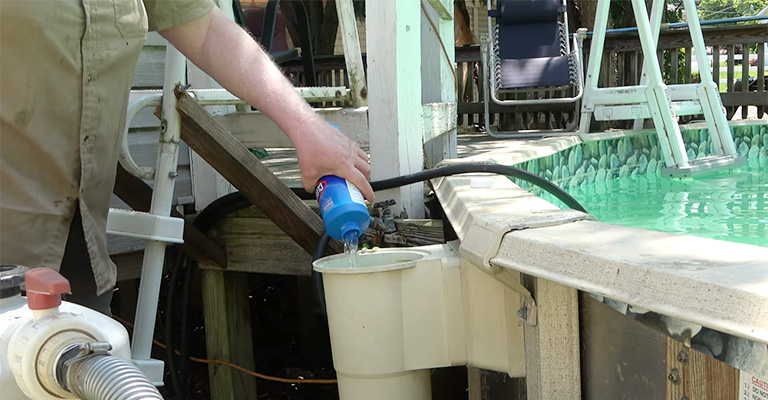
Mix all the chemicals in the water manually with a skimmer net or pole. While this may take some time, it is essential to keep the water moving so the chemicals are effectively dispersed.
Step 6: Use a Diffuser
Because the water won’t be continuously moving around due to the lack of a pump, use a chlorine diffuser to dissolve the chlorine.
Step 7: Maintain pH Levels
It is important to maintain a pH level of 7.2 to 7.6 in your pool water. To ensure that your chlorine is functioning effectively, you should test the water and ensure the levels remain balanced.
Step 8: Brush Your Pool
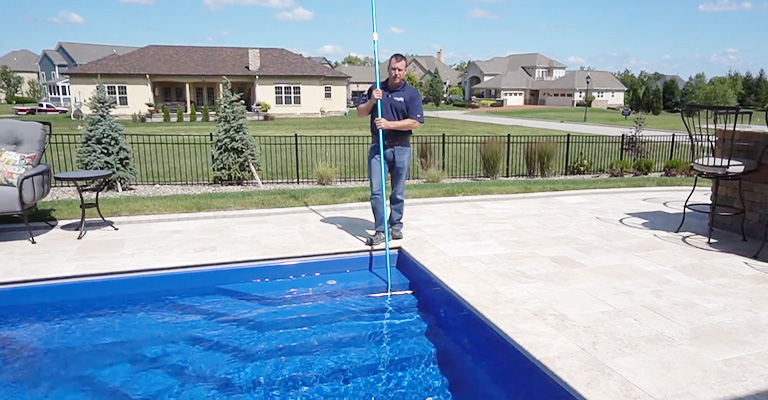
It is important to brush your pool twice weekly after shocking to make sure your shock and other chemicals are distributed evenly.
Step 9: Use a Skimmer Net
Make sure to manually remove any debris from your pool with a pool vacuum and skimmer net.
Although fine particles of contaminants and bacteria won’t be removed, larger bits and pieces like leaves and twigs should be removed.
Step 10: Use an Automatic Cleaner
If your pump is on pause, use an automatic cleaner to filter out fine particulates and bacteria from the pool.
Step 11: Maintain Chlorine Levels
To prevent bacteria from spreading in your pool water, if the pump cannot be used, keep the chlorine levels at the upper end of recommended levels (3ppm) during the period of time the water is unfiltered.
Step 12: Run The Pump
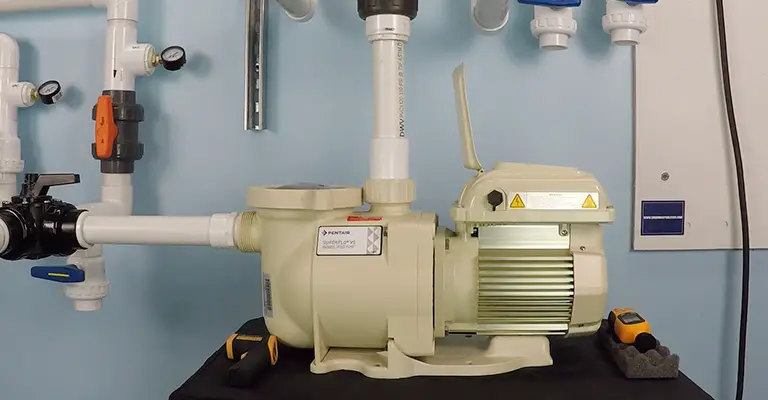
It is important to keep in mind that this is a temporary solution. The steps outlined here will keep the pool clean for a few days only. You want to make sure the water is as contaminant-free as possible so that you can restart the pump!
How Often Should You Shock Your Pool?
You should shock your pool every 2-4 weeks during the pool season as a general rule. Additionally, you should shock your pool at the beginning and end of the season. It is a useful sign that your pool needs shock when it smells strongly of chlorine.
What Happens If You Shock a Pool Without the Pump Running?
If you shock your pool without running your pump, this is generally not a good idea. In the absence of this step, added chlorine will not circulate in your pool, so the shock will not be able to disinfect the water properly.
In this case, your pool’s water will look cloudy and full of bacteria, putting it at risk for an algae outbreak.
If you use too much chlorine in one patch, you may also stain your pool equipment or plaster. Even though contaminants or debris could be shocked, they still need to be filtered out.
By circulating water and filtering germs and toxins, the pump uses two functions. To put it simply, shocking a pool without running the pump is extremely counterproductive.
In a nutshell, if you don’t run your pump for a few hours after shocking your pool, you can expect:
- A water source that is unsafe and unhygienic.
- An algae-covered body of water that is green or murky.
- Cloudy or milky water.
- Pool equipment and plaster have been damaged.
- As shock dissolves in water, it does so inconsistently.
Why Is It Important To Run The Pump When Shocking Your Pool?
Circulation and filtration of a swimming pool depend on pool pumps. This system ensures that every drop of water in your pool is circulated and then passed through the filter to remove contaminants.
Keeping the pool water moving prevents stagnant water from growing and prevents algae infestation. A chemical hotspot may result from shocks without the use of a pool pump.
Depending on the concentration of shock, certain parts of the pool water will be concentrated and others won’t. Using a leaf net skimmer or manual vacuum would be less efficient and tedious than mixing it by hand.
This means that you should have the pool pump repaired or replaced as soon as possible. A swimming pool pump shouldn’t be removed from your pool for long, ideally for a week.
You may need to drain the pool and add fresh water to keep it fresh if it remains empty for more than a week. Swimming pool pumps should also be turned off whenever they are not in use.
In this way, you will save yourself from a tedious shock after swimming, and you will prevent your swimming pool from getting dirty too quickly. It is possible to cover your pool and maintain it while it waits for the rain to stop.
How Long Should You Wait To Swim After Shocking Your Pool?
Be sure to wait at least 24 hours after shocking your pool. The pool shock must be allowed to work in the water for a few hours before it can clean it and stabilize it.
As a result of accidentally inhaling the liquid too soon, you could experience unpleasant symptoms such as dryness, burning, redness, pain, blistering, wheezing, or shortness of breath in your lungs.
If you accidentally breathe it in, you could also experience discomfort like energy loss, nausea, and vomiting. Additionally, make sure the pH level is between 7.2-7.6 and chlorine levels are between 1-3 ppm before diving in.
Should You Run The Pump After Shocking The Pool?
Without a doubt, yes! To ensure that the shock is thoroughly dissolved in the water, the pool must be run with a pump after the shock has been applied.
The purpose of pumps is to circulate and filter water, which keeps the water clean, blue, and sparkling again. You’ll have a hard time mixing chemicals evenly by hand without a pump, so begin a pump installation immediately.
You should run your pool pump for at least 12-24 hours to thoroughly filter the water and eradicate algae chances.
Final Words
To remedy a faulty pump or to repair the water in your pool, I strongly advise getting in touch with a pool professional.








